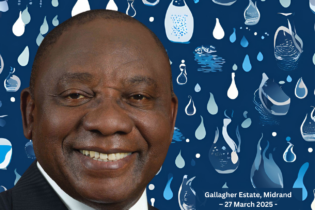A site study of the historic Groote Schuur estate in Cape Town has turned up a number of new findings, including the fact that it could be sustainable if its inherent water resources areproperly managed.
Groote Schuur Estate in Cape Town has been home to the VOC granary, Cecil John Rhodes and South Africa’s presidents. The ‘Groote Schuur Minute’ between the ANC and FW de Klerk, then President of South Africa, was also signed at the estate. In a new development, the estate has been the site of a study to determine its groundwater potential for irrigation, to ensure that these historic grounds are well-maintained in an eco-friendly way. This study is part of a larger irrigation storage and supply system upgrade to be undertaken by the Department of Public Works, the client. The lead consultant (civil engineering) is Aurecon and the groundwater assessment and hydrocensushave been undertaken by Muizenberg-based water and earth sciences consultancy Umvoto Africa. The hydrocensushas involved investigating all current water points (such as boreholes and springs) within and surrounding the project area. Assessing the aquifer As much information as possible has been gathered on factors such as construction of existing boreholes (depth, diameter, casing,etc.),yield of the borehole, how much water is used, what it’s used for, samples for hydrochemical analysis, and more. This gives agood idea of the aquifer characteristics in the vicinity. This on-site research is being supplemented with a desktop-based groundwater assessmentusing data sources such as geological and hydrogeological maps, Google Earth mapping, old reports, Department of Water Affairs’ databases and other sources. Using the Department of Water Affairs’ old National Groundwater Dababase, Umvoto has already discovered two possible boreholes drilled back in 1961. According to Umvoto MD Rowena Hay,these had been forgotten over the past decade, due to the numerous contractors that have been doing work on the site over the years. Springing up “The project has been interesting for various reasons, not only because of its historic context, but also unravelling the complex surface water-groundwater interactions that occur in the area. Theseinteractions have led to the development of numerous springs, which have been used for many years, in the Wynberg, Newlands, Rondebosch and City Bowl areas. Two (Nursery Spring and Glenn Spring) are visible within the estate.”Springs occur when groundwater emerges naturally on the earth’s surface. In this case, the springs are fed by groundwater leaking out of the Peninsula Formation sandstone that forms Table Mountain,which lies above the Cape Granite Suite and Malmesbury Group shale, which are relatively impermeable.
Rainwater flows into open surface fractures and faults within the Peninsula Formation aquifer, and then into larger fracture systems that extend from the Cape Peninsula into the underlying Malmesbury Group shale. Groundwater emerges at specific points or diffuse areas as springs or seeps, where these fracture and fault systems have closed sufficiently in the Malmesbury Group (either due to mechanical weakness or weathered clay infill) to cause the pressure head within the water to force it to the surface. The perennial, strong spring flow and high water quality suggests the spring water is from the Peninsula Formation aquifer, despite exiting from the Malmesbury Group shales (which are generally low-yielding with poor water quality). Integrated irrigation Umvoto completed the report in October. Early indications are that there is sufficientgroundwaterfrom both estate springs as well as current boreholes to supply a large portion, if not all, of the estate’s irrigation requirements, keeping this historic part of Cape Town in good condition for future generations. Future work will include measuring seasonal spring flow, as well developing infrastructure to incorporate the springs into the current irrigation system. The sustainable yields of the current boreholes, as well as determining whether new pump infrastructure will be required, will also be investigated. Caption: Umvoto trainee hydrogeologist Sinawo Jack sampling water from the borehole adjacent to the Genadendal building (Cape Town residence of the South African President) within Groote Schuur Estate.









